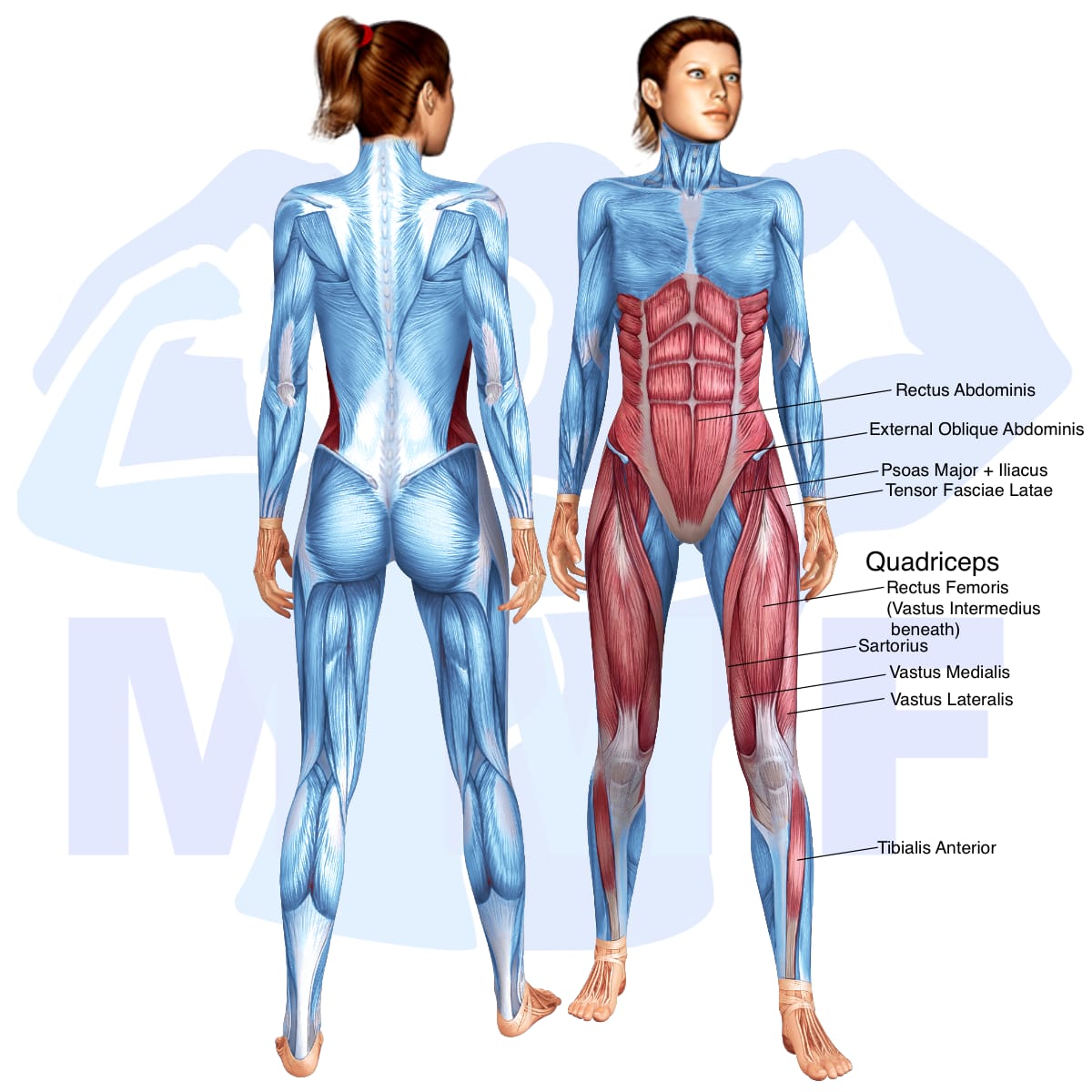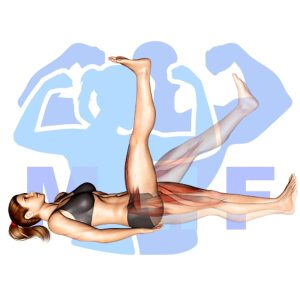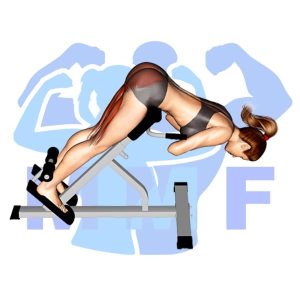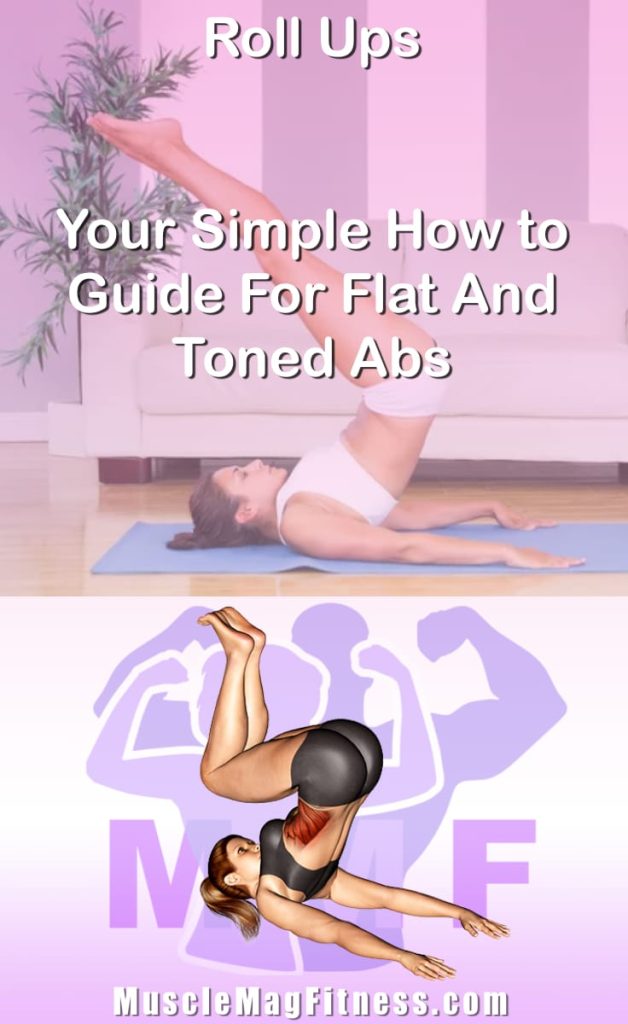Do you want to perfect your Pilates roll up but always seem to struggle with it? You are not alone. Many people struggle with this exercise due to a lack of core strength and flexibility. It can be frustrating when you can’t achieve the results you want despite putting in the effort. But don’t worry, we have got you covered. In this post, we will be sharing some tips and tricks to help you master the Pilates roll up, so you can improve your core strength and flexibility. Get ready to roll your way to a stronger, healthier you.
Roll Ups Summary
- Primary Muscles: Rectus Abdominis
- Secondary Muscles: Iliopsoas (Psoas Major & Iliacus), Obliques, Rectus Femoris, Sartorius, and Tensor Fasciae Latae
- Equipment: Body Weight
- Mechanics Type: Compound
- Force: Pull
- Utility: Basic

Roll Ups Instructions
- Setup by laying supine on a mat with your knees bent and feet off the ground, so your thighs are vertical.
- Place your hands down at your side for a base.
- Flex your waist to raise your hips off the mat.
- Keep your upper back and shoulders on the mat and roll your torso up as high as possible.
- Return by unrolling your body until your hips contact the mat.
- Do your Roll-Ups for 10-15 repetitions.
Video Tutorial
Roll Ups Muscles
Target (Agonist)
Synergists
Dynamic Stabilizers
- None
Stabilizers
- Deltoid – Posterior
- Latissimus Dorsi
- Pectineus
- Pectoralis Major – Sternal
- Rectus Femoris
- Sartorius
- Tensor Fasciae Latae
- Teres Major
- Triceps – Long Head
Antagonist Stabilizers
- None

Benefits of Roll Ups
The Roll Up exercise is an effective way to target the Rectus Abdominis muscle, which runs along the front of the abdomen and is responsible for flexing the spine and trunk. When performing Roll Ups, the Rectus Abdominis is activated as you slowly curl your torso off of the floor, and as you roll back down. This exercise helps to strengthen and tone the abdominal muscles, while also improving core stability and posture. Additionally, this exercise can help improve your balance and coordination, as well as improve overall strength.
Tips for Performing Roll Ups
If you’re looking to take the roll ups to the next level, then you’ve come to the right place. Using these suggestions can enable you to take full advantage of this amazing workout. You’ll be able to tone your abs muscles, and reduce your chance of getting hurt. Let’s get started and explore how these suggestions will benefit you.
- Engage Your Core – Make sure to keep your core tight and engaged while doing the roll ups. This will help you stay balanced and protect your lower back.
- Use Controlled Movements – Keep your movements slow and controlled. Moving too quickly can lead to an injury, so be sure to keep your movements steady and deliberate.
- Keep Your Neck Relaxed – Remember to keep your neck relaxed throughout the exercise. Tensing up can strain the muscles in your neck, leading to discomfort.
Benefits and Tips Video
Frequent Mistakes To Avoid
When it comes to executing roll ups, avoiding common mistakes is usually the difference between an effective workout and a painful injury. Additionally, achieving the most out of the exercise requires proper form, and avoiding perform typical errors can allow you to perform the exercise correctly and obtain optimal results. But relax, it’s not quite as difficult as it might seem. By knowing the errors to avoid and taking the appropriate actions, you can execute the exercise safely and effectively. So it is time for you to optimize the impact of this exercise and experience the benefits of a successful workout.
- Not engaging their core: When performing roll ups, it is important to engage the core muscles to ensure that the exercise is being done correctly and safely. Without engaging your core, you may not be getting the full benefit of the exercise and can even cause injury.
- Overstretching: When doing roll ups, people tend to overstretch their muscles beyond their limits, which can lead to muscle soreness and even injury. To avoid this, make sure to keep your movements within your body’s range of motion and not push yourself too hard.
- Not going slow enough: Performing roll ups too quickly can make them less effective and can also cause strain on your muscles. Make sure to take your time and keep your movements controlled to get the most out of the exercise and to protect your body.
Find More Bodyweight Exercises Here
Variations and Complementary Exercises
In order to maximize the benefits of Roll Ups, it is important to switch up your routine and incorporate other exercises that work similar muscles. Below is a list of variations, complementary, or alternative exercises that can be used to target the same muscle groups as Roll Ups.
Roll Up Crunch

Roll Up Crunch is a great exercise to supplement or replace the traditional Roll Ups exercise. The Roll Up Crunch exercise involves lying flat on the ground and crunching up with your legs straight, using your core muscles to lift your upper body off the ground. This exercise targets the same muscle groups as traditional Roll Ups, but in a slightly different way. The Roll Up Crunch can help increase core strength and stability, as well as flexibility in the lower back. In addition, the crunching motion of the Roll Up Crunch works to improve balance and posture. This exercise can be done as part of a core-strengthening routine or as an alternative to traditional Roll Ups for those looking for a slightly different challenge.
Reverse Crunch

Reverse Crunch is a core exercise that is complementary or an alternative to Roll Ups. It targets the lower abdominal muscles and obliques, and helps strengthen the core. It can be performed on a flat surface or on an incline to increase the intensity. To perform Reverse Crunch, start by lying on your back with your knees bent and feet flat on the floor. Using your core, raise your hips up towards the ceiling until your thighs are perpendicular to the ground. Slowly lower your hips back to the starting position. Reverse Crunch is a great exercise to add to any core workout routine and can help improve stability and posture.
Plank Hip Lift

The Plank Hip Lift is a great complementary or alternative exercise to Roll Ups. It works the core muscles in a similar way, but instead of lying on your back with your legs up, you stay in a plank position and lift your hips up as high as you can. This move requires core strength and stability, as well as balance and coordination. It also works the glutes and hamstrings, making it an effective full-body exercise. By doing both Roll Ups and Plank Hip Lifts, you will be able to target the same muscles in different ways and get an even better workout.
Check Out These Top Bodyweight Exercises
Plank

Plank is a great complementary or alternative exercise to Roll Ups. The Plank requires you to hold your body in a straight line while balancing on your toes and elbows. This exercise works your core muscles and can help to improve your balance, posture, and coordination. By performing the Plank instead of Roll Ups, you will still be working your core muscles while also strengthening other muscles and improving your overall strength and balance. Furthermore, Plank is a low-impact exercise that can be done anywhere and with minimal equipment, making it an ideal choice for people who are looking for an alternative to Roll Ups.
Lying Straight Leg Raise

The Lying Straight Leg Raise is a great complementary or alternative exercise to the Roll Up. This exercise is performed by lying on your back with your legs extended and your arms by your side. Then, slowly raise your legs up as high as you can while keeping your lower back flat on the ground. This exercise will target your abdominals, hip flexors, and hamstrings, strengthening and toning them. It is an effective way to build a strong core and improve posture while reducing the risk of back injuries. The Lying Straight Leg Raise is ideal for those who may find the Roll Up too challenging, but still want to work on their core strength.
Lying Alternating Leg Raises

Lying Alternating Leg Raises are a great complementary exercise to Roll Ups. This exercise strengthens and tones the abdominal muscles and hip flexors, which are used in Roll Ups. It is done by lying on the floor with legs straight and raised in the air, then alternating legs one at a time. This exercise requires control and stability, and can be done with or without weights for increased difficulty. Adding this exercise to your core workout routine can help build strength, stability, and overall abdominal definition.
Find More Abs Exercises Here
Opposing Complementary Exercises
Performing exercises that use opposing muscle groups can help you to achieve a balanced workout. Incorporating these exercises into your routine will help you to develop strength and stability while improving your overall health. Here are some exercises that complement Roll Ups by using opposing muscle groups.
45 Degree Hyperextension

The 45 Degree Hyperextension exercise is the perfect complement to Roll Ups, as it targets the opposing muscle group. This exercise works the lower back and glutes, specifically targeting the erector spinae, which runs along the length of the spine. By strengthening the opposing muscle group to that of the Roll Up exercise, it helps to create balance and symmetry in your core muscles. This will help you to maintain correct posture, reduce low back pain, and improve your overall strength and stability.
Straight Leg Cable Pull Through

The Straight Leg Cable Pull Through is an excellent exercise to complement Roll Ups, as it works the opposing muscle group. This exercise targets the hamstrings, glutes, and lower back muscles, all of which are important for overall body stability and strength. The Straight Leg Cable Pull Through is performed by standing with feet hip width apart and a cable machine set at knee height. The user then grabs the cable with both hands and pulls the cable back towards their chest while keeping the legs straight. By using the opposite muscle group of Roll Ups, the Straight Leg Cable Pull Through helps to promote balanced muscle development and strength throughout the body.
Bird Dog Plank

Bird Dog Plank is a great exercise to complement Roll Ups, as it works the opposing muscle group. Bird Dog Plank works the back muscles, specifically the erector spinae and gluteus maximus, while Roll Ups work the abdominal muscles. Bird Dog Plank helps to stabilize the core and strengthen the lower back, which can prevent injury when performing Roll Ups. Additionally, Bird Dog Plank helps to increase balance and coordination, which can help to improve performance when performing Roll Ups.
Master the Roll Ups and Strengthen Your Core Today!
If you want to strengthen your core and build a stronger, more stable body, then mastering the roll up exercise is a must! Roll ups work your abs, back, and hip flexors, all while improving your flexibility and coordination. However, like any exercise, it can take time to master the technique and get the most out of the movement. So, take your time and start slow. Remember, the key is to engage your core muscles throughout the entire movement, not just at the end. With practice, dedication, and the right mindset, you can become a master of roll ups and achieve a stronger and healthier body.
References: Wikipedia | ExRx.net | PubMed.gov | Comprehensive List of Abs Bodyweight Exercises

